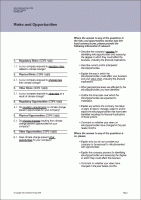Statistics are one of the great lynchpins of modern society. Everything is measured as a proportion, sometimes to mask the raw figures and gives marketing men something to hang a story on.
For example, a processed food product may scream “now with 50% less added fat!” Terrific, but it represents a tiny health gain for the consumer if fat was a minor ingredient in the first place.
Then there are the statistics which flatter to deceive. My favourite is the (possibly apocryphal) public relations statement that George W. Bush came in the “top 80 percent” of his class at university. Yeeeees.
Finally there are those statistics where the figures really do show major improvement. The Carbon Disclosure Project (CDP) is a case in point.
The Carbon Disclosure Project’s History in Statistics
The CDP was set up in 2000 as an independent charitable body to represent major institutional investors’ interests to the largest companies in the world.
The rationale was that it was easier for these investors to request specific figures on greenhouse gas (GHG) emissions from companies as a single body than for each investor to write separately.
So on 31st May 2002 the CDP1 questionnaire was sent to the chairmen of the world’s 500 largest companies (FT500) with the backing of 35 of the largest institutional investors. Just under 60% engaged with the process.
This year the CDP7 questionnaire has been set to 3,700 companies worldwide on behalf of 475 institutional investors. Last year 82% of the FT500 companies approached responded.
These are figures any businesses would be proud of over a six-year period: a seven-fold increase in market, a thirteen-fold increase in client base and a 33% increase in notional sales conversions.
What’s more, the CDP7 questionnaire will be sent to the top hundred or so companies in over 20 countries or regions, including the FTSE350, S&P500, India 200, China 100 and, for the first time, FTSEurofirst 300 Eurozone.
This shows there is a huge opportunity for companies to differentiate themselves from their competitors by using their CDP disclosure on their website.
How CDP7 Can Give Websites The Edge
The CDP7 questionnaire, which went out this month, is made up of 28 sections with up to 15 questions in each. Many require data to be gathered from different locations or departments from within a company and some ask for it to be reported in this manner.
This data could be published on company websites to show exactly what a company’s emissions are and what it is doing to minimise them.
It could show the relative efficiencies operations in different locations or departments. Once a few years’ data has been collected interactive charts can be provided to help analysts chart a company’s performance over time.
In the future, companies may even publish their data in a markup language similar to XBRL. This would allow direct comparison and mining of the data between different companies, currently only available through a bespoke Bloomberg Professional interface.
How CDP7 Can Give Companies The Edge
Ultimately, every company which responds to the questionnaire will have detailed GHG emissions data at its fingertips.
As CDP7 is targeted at companies in over 20 national and regional business indices there is a very good chance your company will be looking at these figures right now.
It seems a shame to go to all the time and expense of collating these figures and then not to share them with the wider world.
This is especially true when the company could so easily distinguish itself from its competitors through a commitment to corporate transparency environmental sustainability.
Lucy is Editor at Corporate Eye





Like 2 lawyers in chains at the bottom of the river…CDP is a good start. But when it comes to energy the focus is on actual usage…which in one article said 2007 GHG was up…primarily due to colder winters and warmer summers…So wonderful…the GHG people do not take into consideration weather when it comes to GHG emissions…if they did they would allow their following to perhaps see the affect of their conservation measures and efficiency measures…
What is more discouraging to work hard to decrease usage and GHG and see them increase? or…to present two sets of numbers…one actual showing the increase and the other weather normalized and show a decrease. Obviously there are more variables than the weather, but it too is a start.
No two buildings are alike…and the cost to reduce is an interesting data point…What is the investors “hurdle” rate to reduce the emissions…what are we shooting for?…not a lot of answers.
Comparing your company to another even in the same niche is an apples to oranges comparison no matter how you slice it…it’s a fruit salad.
The one thing, as Curly said on City Slickers, that is important…is awareness and a push to reduce. (Ok…he never defined the one thing) The rest is simply dressing. So I guess we have fruit salad with whipped cream.